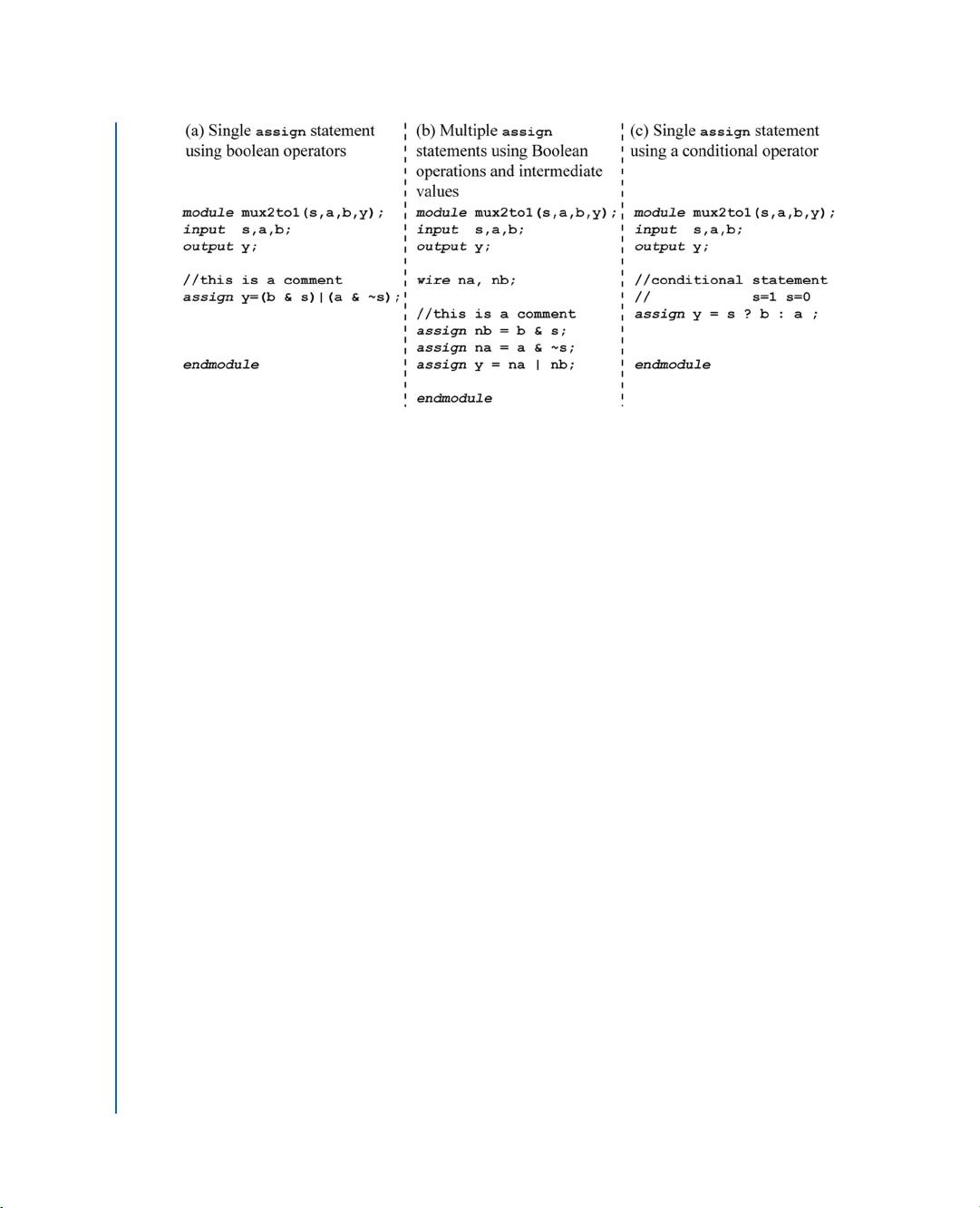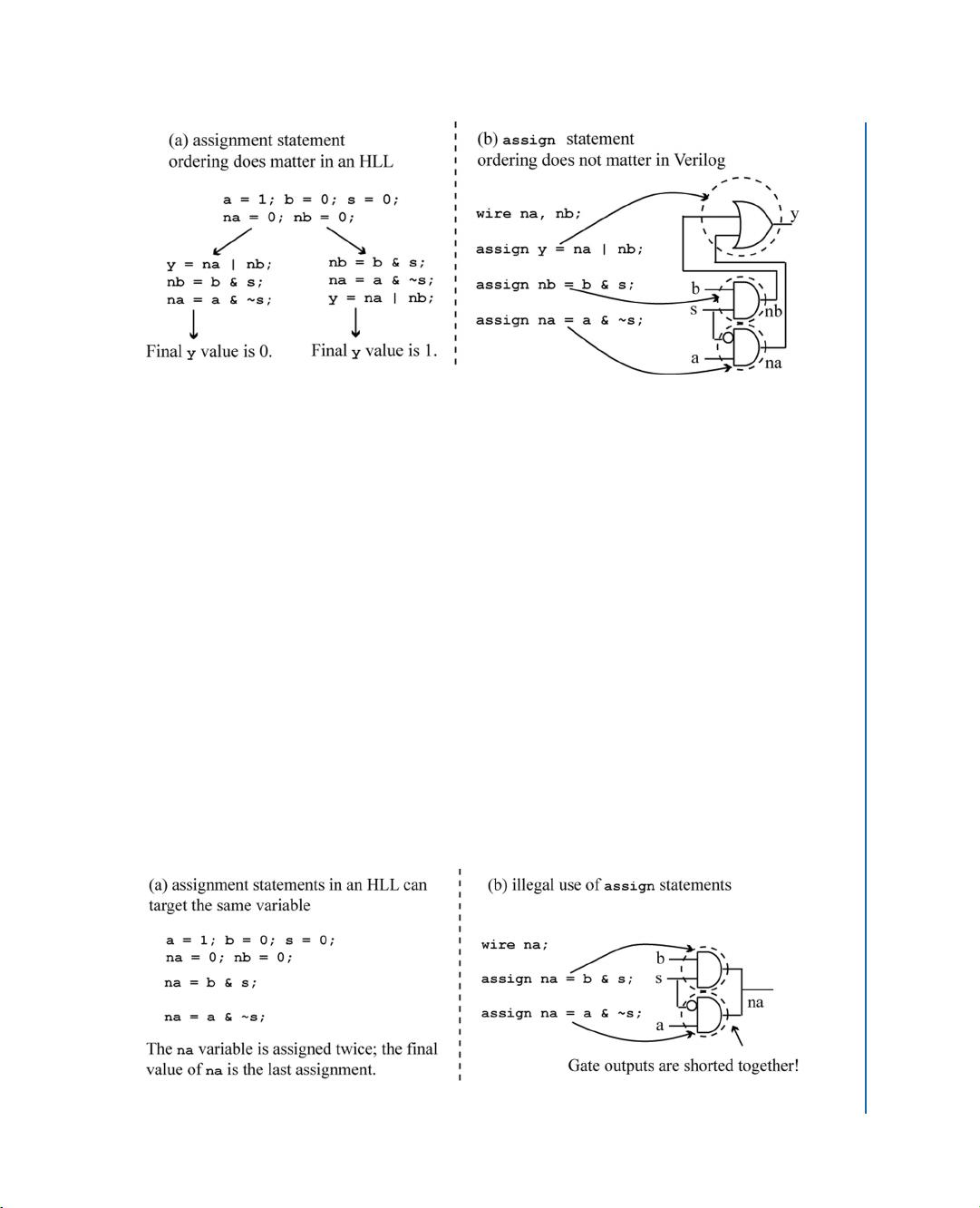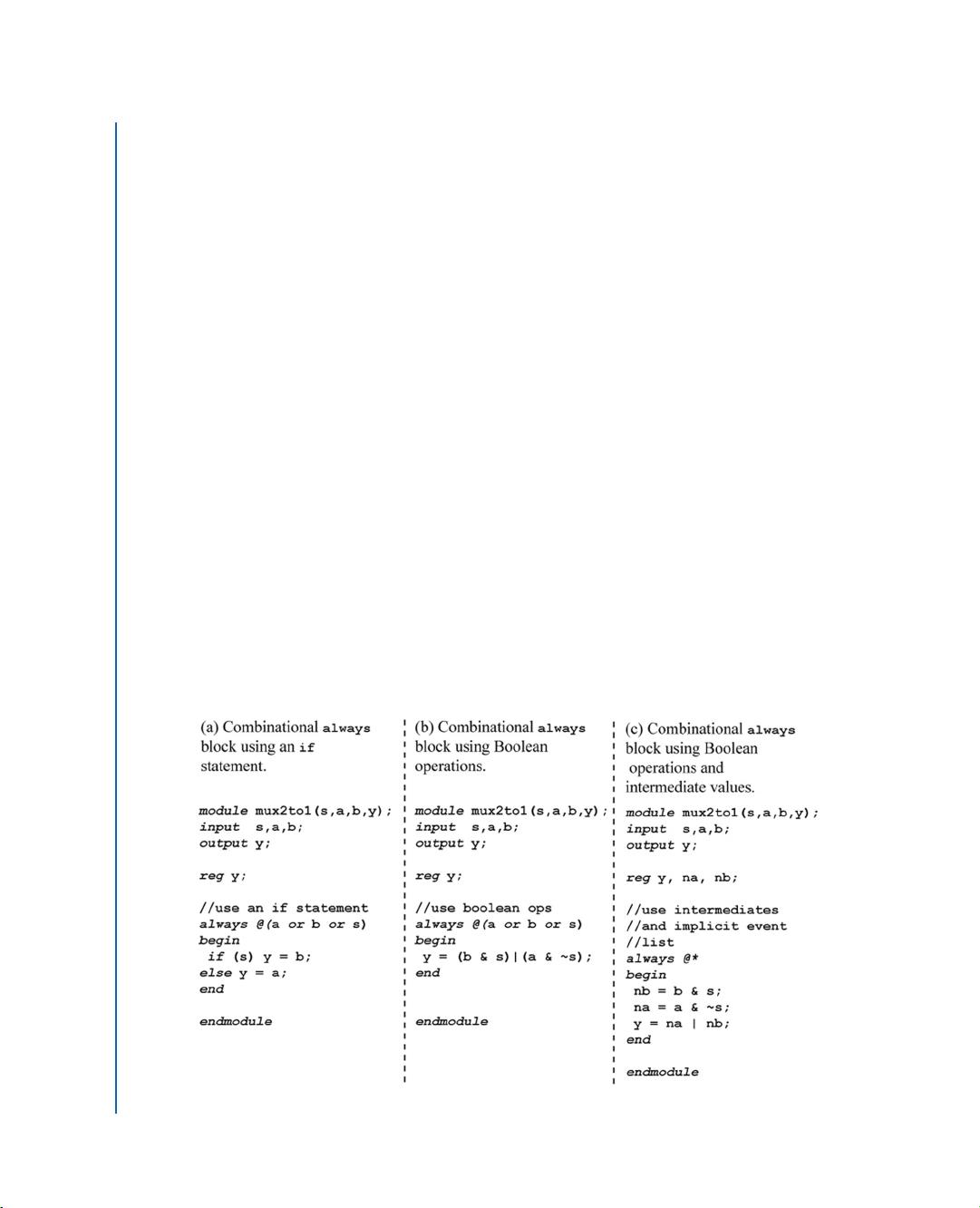
P1: IML/FFX P2: IML
MOBK046-01 MOBK046-Thornton.cls October 14, 2006 13:14
DIGITAL LOGIC REVIEW WITH VERILOG QUICKSTART 9
of an always block can be one or more statements; begin and end keywords are used to
group multiple statements. The statement “
reg y;
” is included in each of the three modules
of Fig. 1.8 as any net that is assigned within an
always block must be declared as a reg type;
this does not imply that this net is driven by a register or sequential logic.
Fig. 1.8(a) implements the multiplexer using an
if-else statement, with the if-body
evaluated for a nonzero (true) conditional expression and the
else clause evaluated otherwise.
Keywords
begin
and end can be used to place multiple statements in an if-body or else clause.
Fig. 1.8(b) implements the multiplexer using Boolean operators, while Fig. 1.8(c) distributes
the Boolean operators using intermediate nets and multiple assignments. The “=” operator
when used in an
always block is called a blocking assignment, this terminology is discussed in
more detail in Section 1.6, which covers event-driven simulation principles. The
always block
of Fig. 1.8(c) uses an implicit event list designated by “
@
∗
,” which means that all nets on the
right side of the assignments are included in the event list.
The semantics of the net assignments in an
always blocks differs significantly from
assign
statements in that statements in an
always
block use the same sequential execution
model as the statements in an HLL.
•
The logic synthesized for an
always block duplicates the assignments’ behavior as-
suming that the assignments are evaluated sequentially. This means that the order in
which assignments are written in an
always blocks affects the logic that is synthesized.
•
Because of the sequential nature of an
always block, the same net can be assigned
multiple times in an
always block; the last assignment takes precedence.
Fig. 1.9 shows a case in which multiple blocking assignments are made to a net in the same
always block, with assignment ordering affecting the synthesized logic. In Fig. 1.9(a), the
clr input takes precedence over the ld input if both are “1,” while in Fig. 1.9(b) the opposite
holds true. Observe that in the two
always blocks, if both ld and clr are “0,” then the initial
assignment of
q=q old sets the value of q. This is a common coding style used in combinational
logic
always blocks in that a default assignment is made to an output at the block’s beginning,
which is then overridden by later assignments in the block based upon the assertion of other
inputs.
The use of a default assignment to the output net of a combinational
always block
guarantees that the output net is the target of an assignment for any input combination. If there
is some logic path through the
always block that does not assign a value to the output net, then
a latch is inferred on that output as shown in Fig. 1.10. A latch is a sequential logic element,
and should not be synthesized in an
always block that is meant to implement combinational
logic. Inferred latches are a common coding mistake for users who are new to Verilog and logic

























